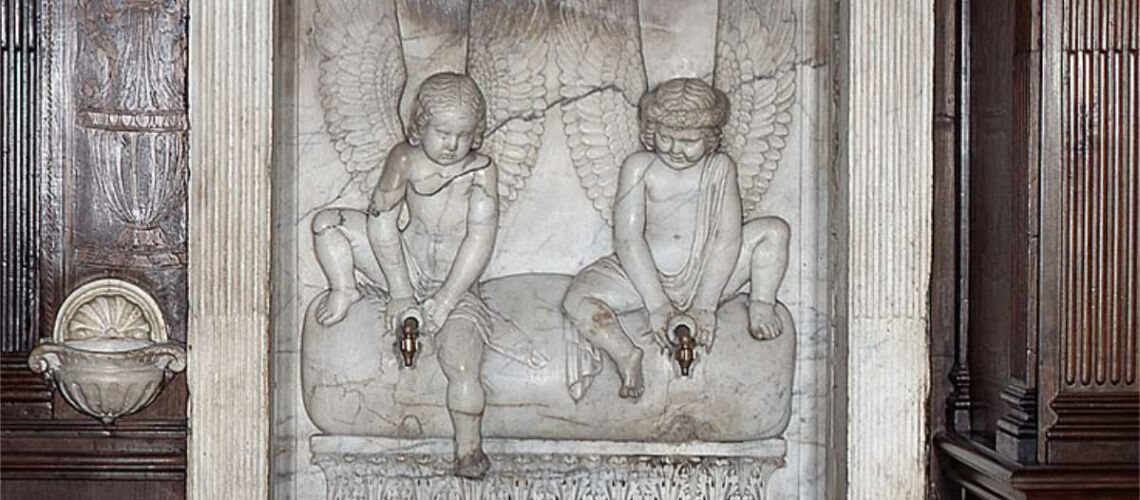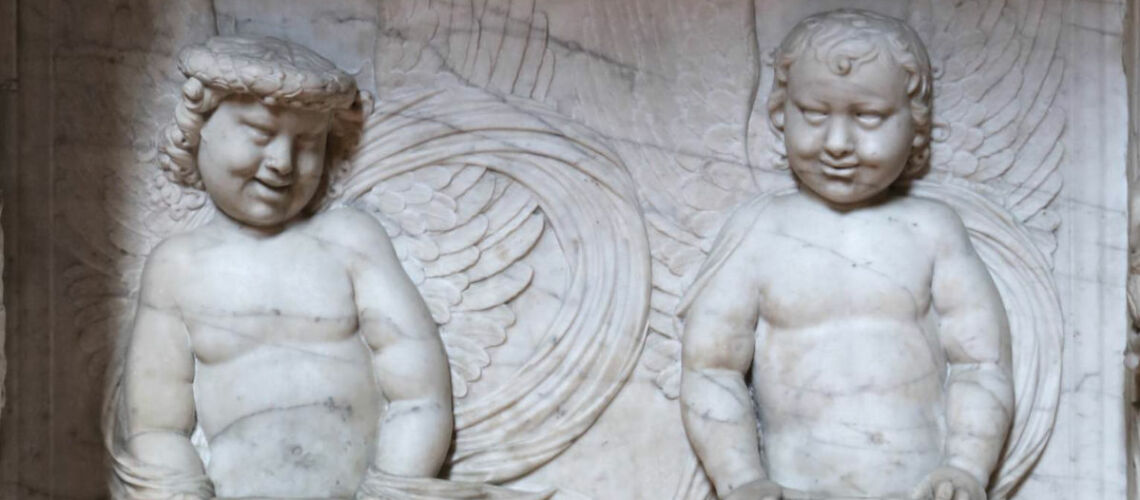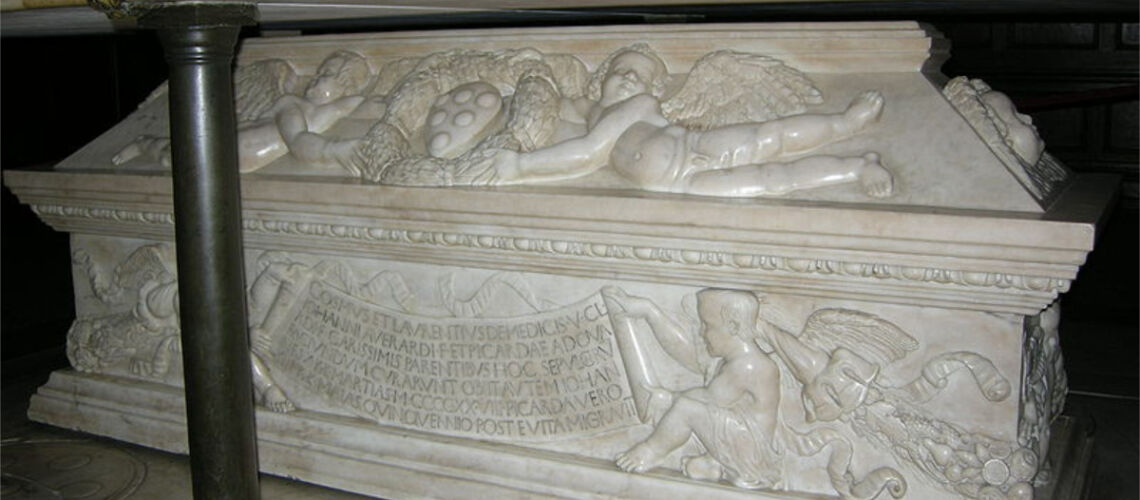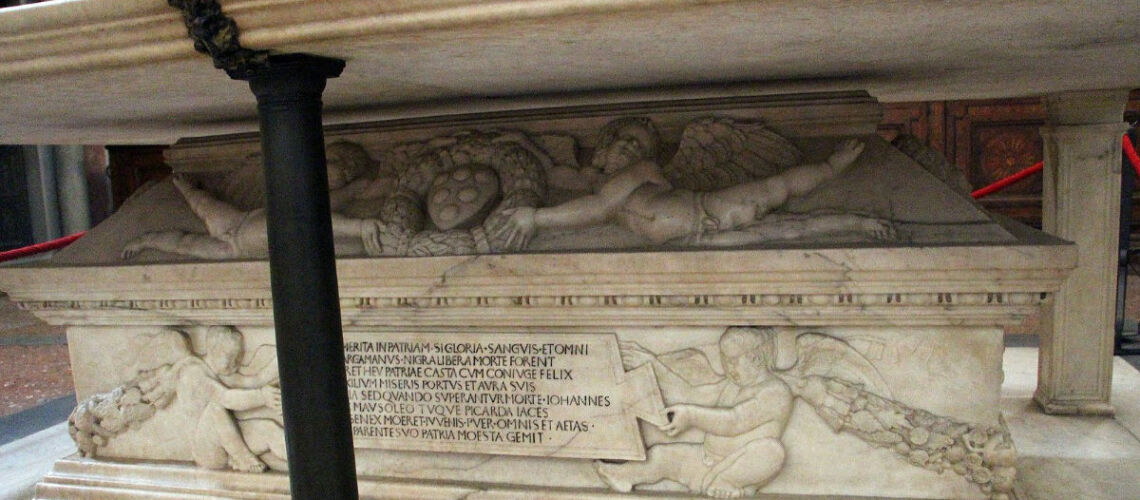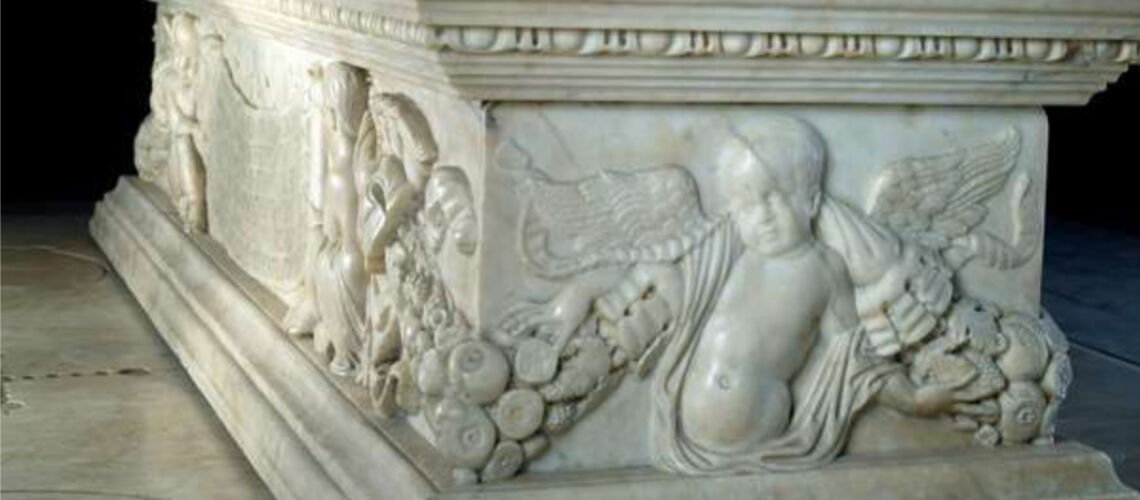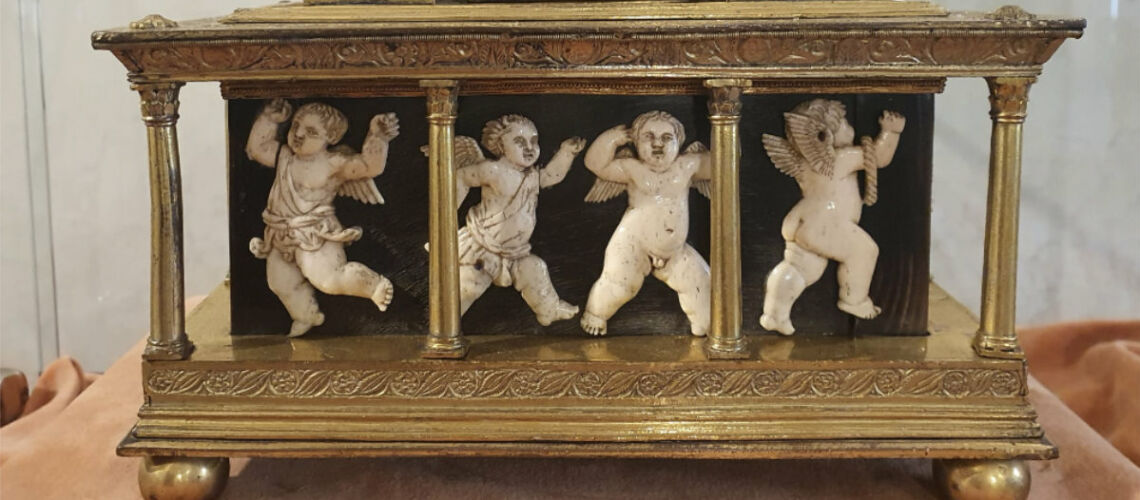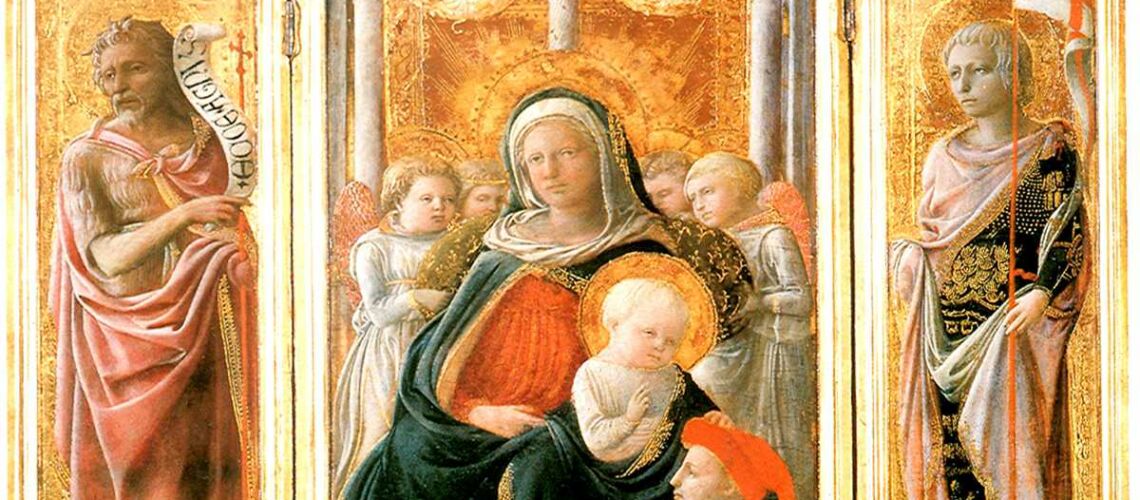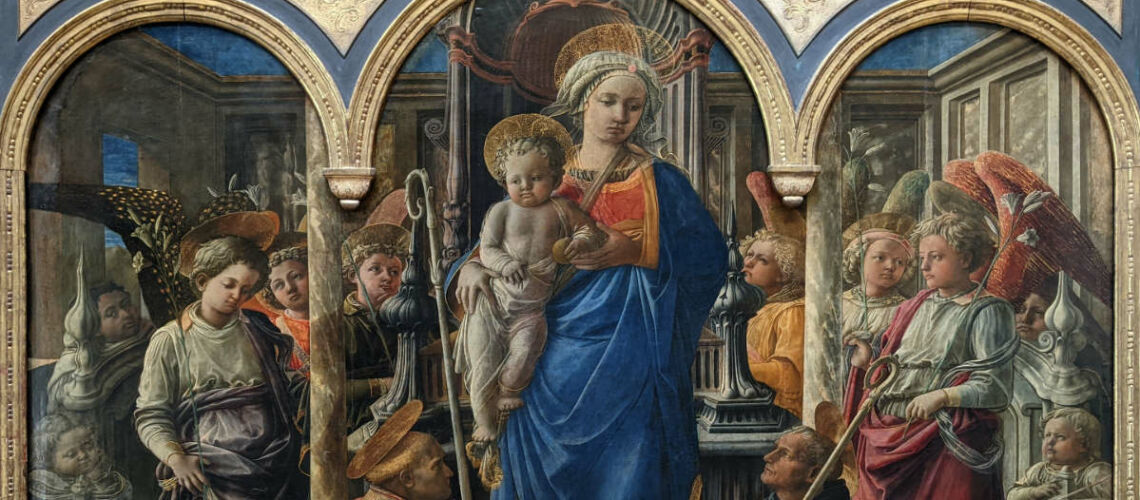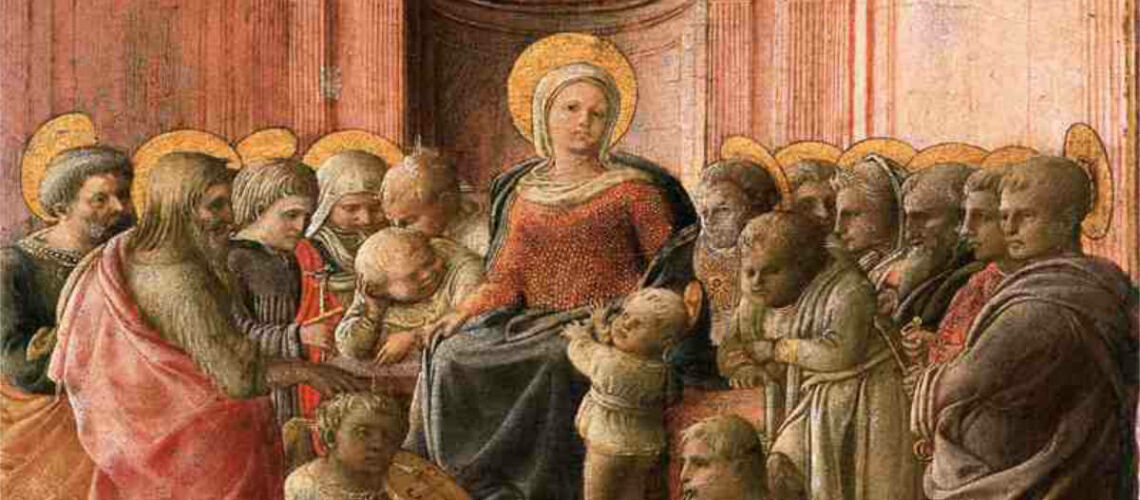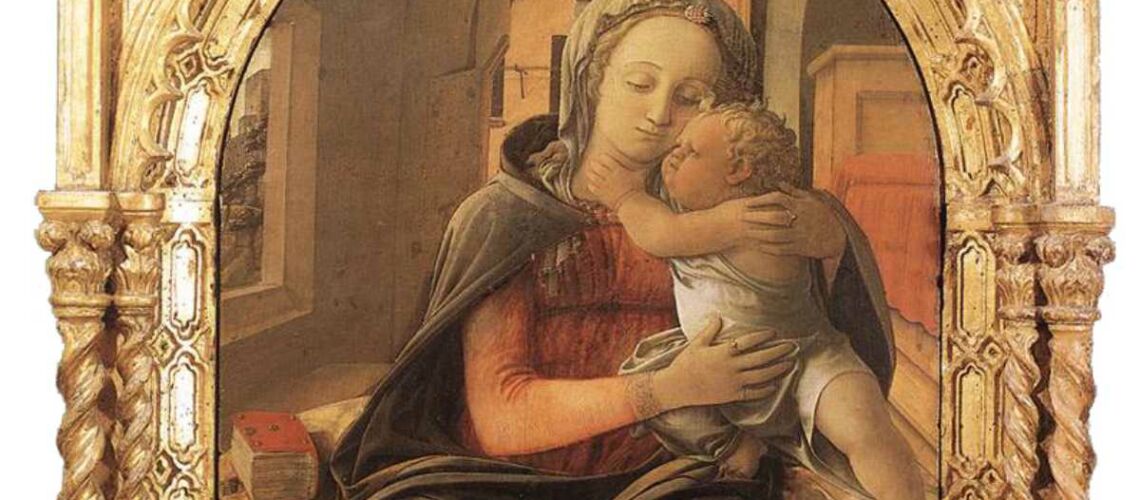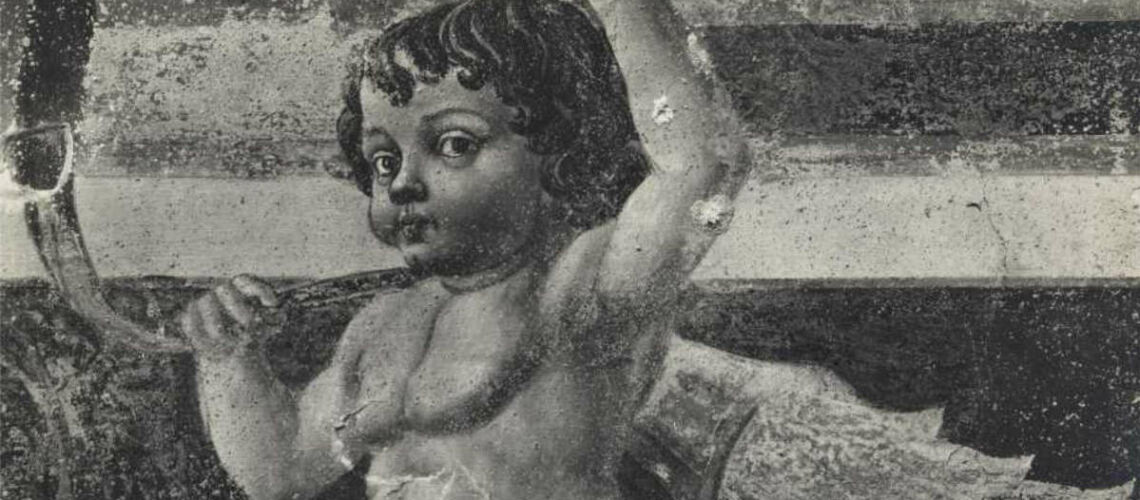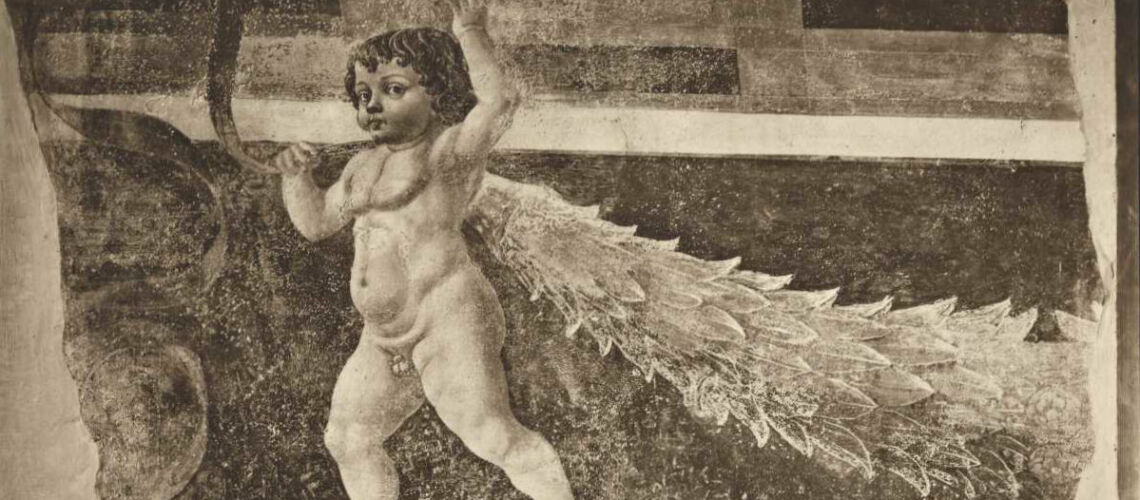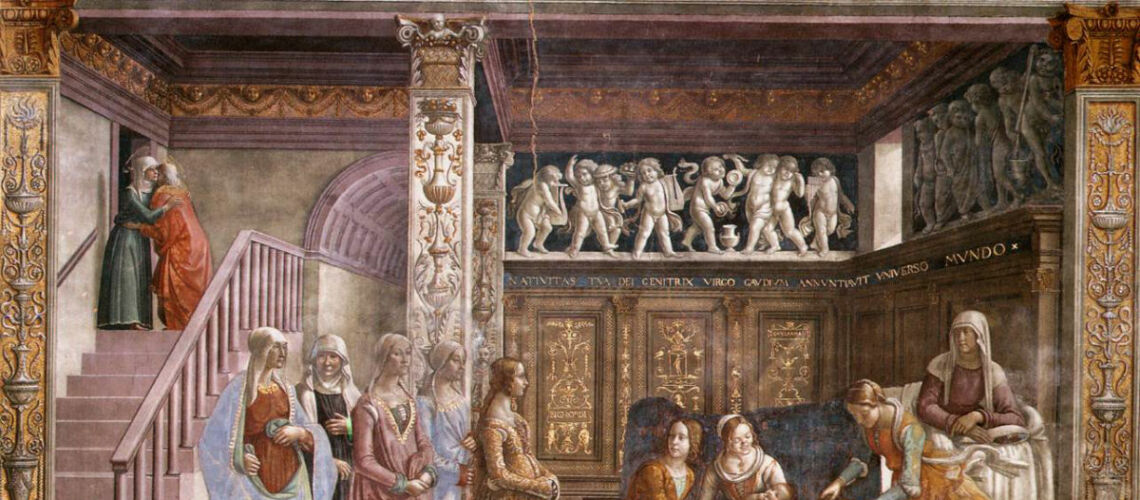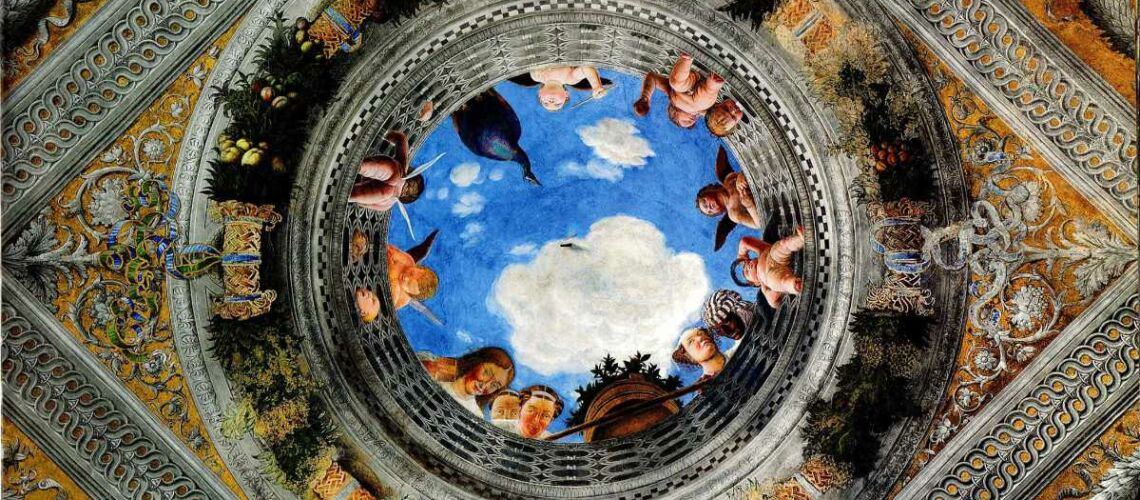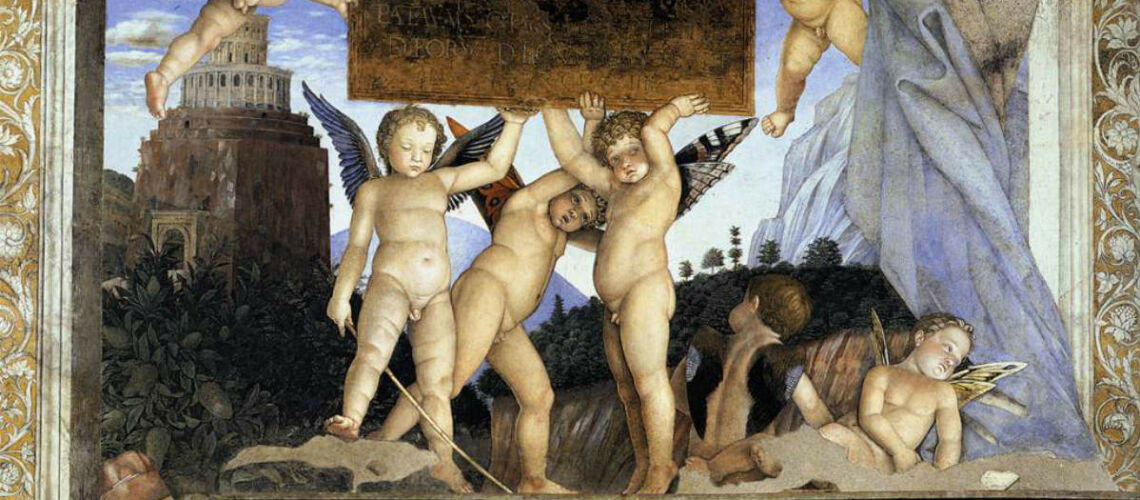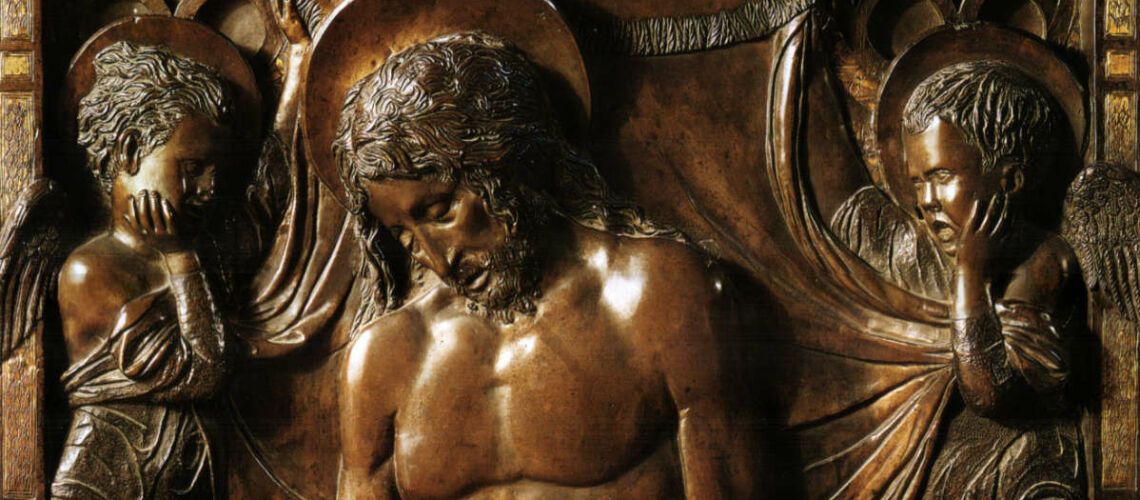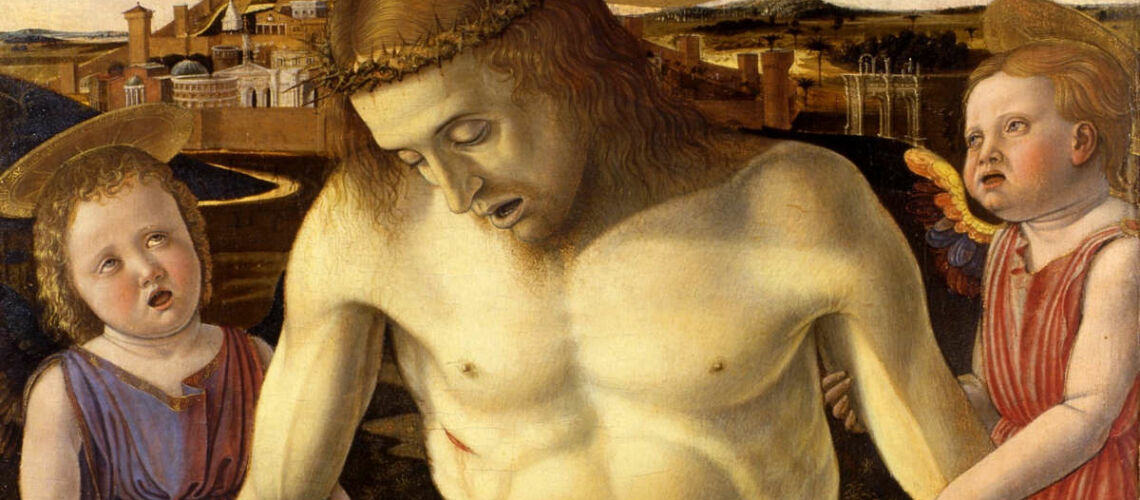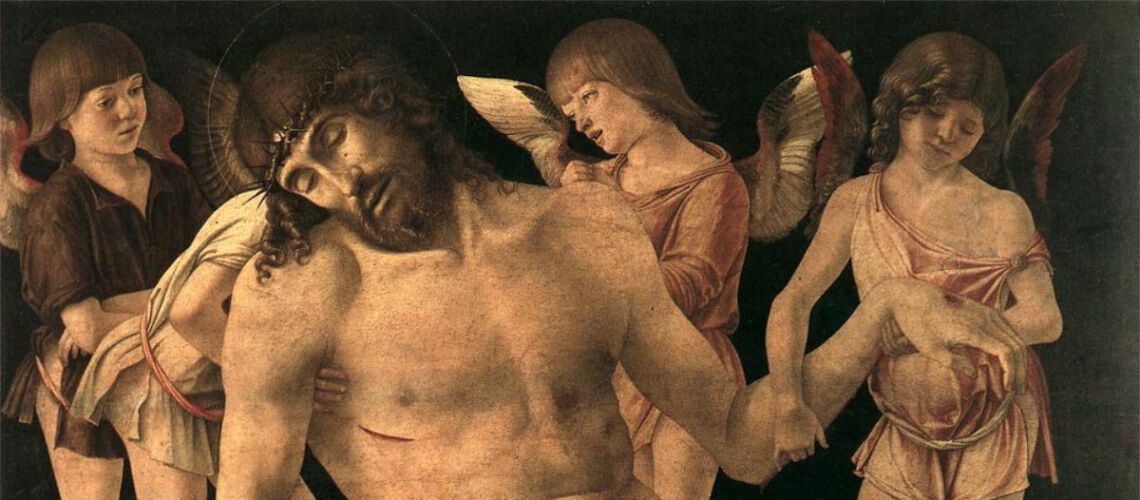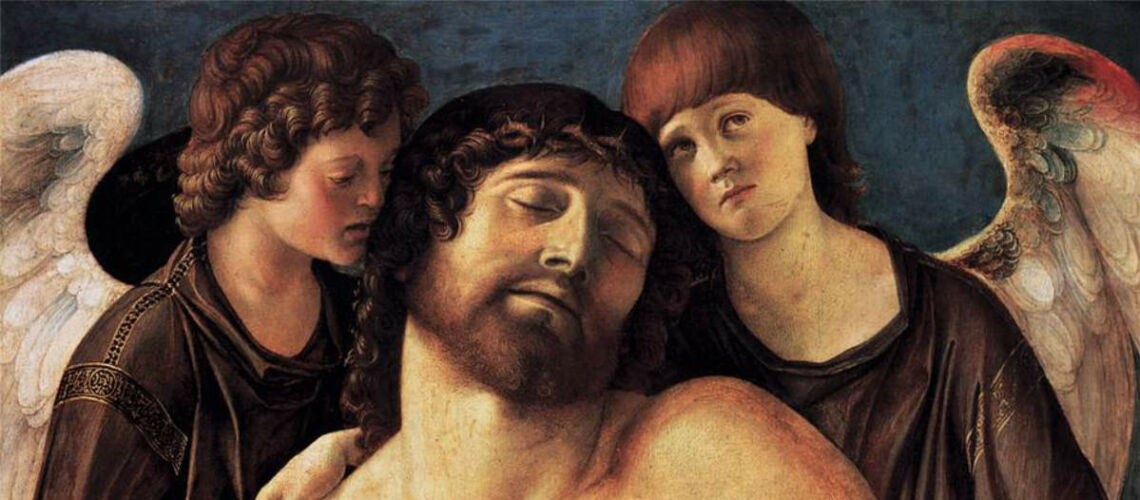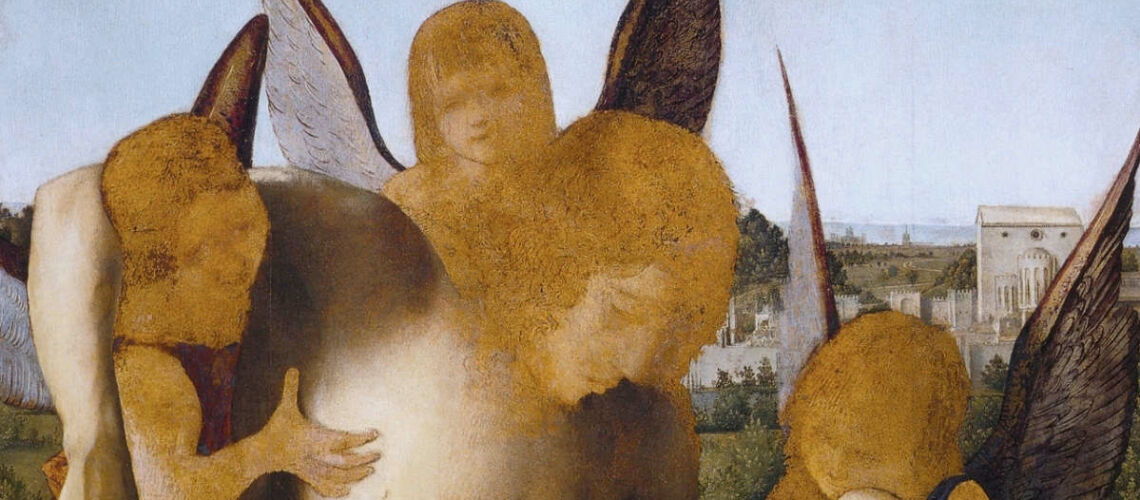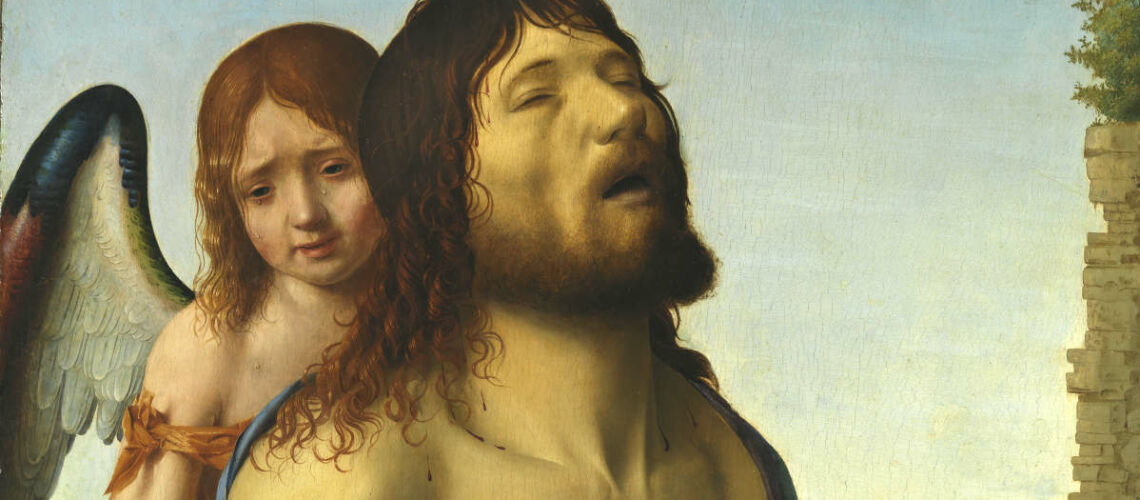The Putti in the art after Donatello
The Putti in the friezes
Donatello used friezes with cherubs in many of his works, such as for example in the two bronze pulpits in San Lorenzo in Florence, in the choir loft of the Florence Cathedral, in the pulpit of the Prato Cathedral. And he influenced various other sculptors in this sense. But in some artists such as Filippino Lippi, Ghirlandaio, Raffaello, Guadenzio Ferrari and others we can also perceive the influence that the discovery of the classic Roman frieze had in 1480 in Nero’s Domus Aurea in Rome.
Andrea di Lazzaro Cavalcanti known as il Buggiano, adopted by Brunelleschi when he was five years old, frequently puts putti in his works. But these look different from Donatello’s, they are swollen and with square faces, small noses with small nostrils, and with mysterious and slightly evil smiles showing their teeth, probably derived from those in Donatello’s choir loft. His washbasin in the Sacresty of the Masses of the Florence Cathedral is a classic-style aedicule with two large seated cherubs inside with enormous wings that seem to hold the spouts from which the water comes out.
The tomb of Giovanni de’ Medici and Piccarda Bueri from 1433 in the old sacristy of San Lorenzo consists of a sarcophagus with seated winged cherubs holding scrolls and flying winged cherubs holding crowns and the Medici coat of arms, more similar to those of Donatello.
Maso di Bartolomeo decorates the bronze gate cast in 1447 with lost wax of the Cappella della Cintola of the Cathedral of Prato with putti. One of these is blindfolded and has a bow and quiver like Eros but also has winged shoes like Donatello’s Attis. His anatomy is of Donatellian derivation, even if the muscular masses make him more like a little David than a putto. Thus he also brought the putti who are outside in the pulpit inside the cathedral.
In 1446 he also made the famous bronze casket of the Sacred Girdle of Prato, in which he repeats in ivory some Donatellian cherubs of the type and in dancing poses of those in the Pulpit, and the casket in pastiglia with the Orsini coat of arms with little cherubs playing musicians.
Influence of Donatello in painting
Filippo Lippi was obviously influenced by Donatello in the use of putti in his painting, since they both lived and worked in Florence. In the Madonna and Child in the Fitzwilliam Museum painted after 1430, the angels become very young winged cherubs,
equally in the Barbadori Altarpiece of 1438 and in the Madonna with Child, Saints and Angels of the Cini Collection of 1431 the typology of Lippi’s putti is confirmed and strengthened which, especially in the faces, will be one of his characteristics,
a feature that also denotes the typology of his Infant Jesuses, as in the Tarquinia Madonna of 1437 (Palazzo Barberini in Rome).
Andrea del Castagno paints in the frescoes of Villa Carducci of 1451, above, some dancing putti similar in poses and style to those of the Pulpit in Prato.
Domenico Ghirlandaio is also influenced by Donatello in the theory of putti placed in the frieze of the fresco of the Birth of the Virgin in Santa Maria Novella in Florence of 1490, which overlap in the dance like those of Donatelli in the Cantoria.
Influenza di Donatello nel Nord Italia
Theories of dancing cherubs were sculpted as decorations by Bartolomeo Bellano in the Monument to Roccabonella in S. Francesco in Padua, from 1494, based on the throne of the Bellano Virgin directly inspired by Donatello’s Cantoria of the Florence Cathedral;
Niccolò Pizzolo, also from Padua, in the altarpiece of the Ovetari Chapel in the church of the Eremitani in Padua, has executed a frieze of putti running and playing with circles and crowns at the top, which derive from those of Donatello’s Cantoria;
Giovanni Antonio Amadeo, of Padua, worked in Bergamo at the Colleoni Chapel until 1476, where he executed the bas-relief sculptures on Istrian stone of rough putti crushing grapes, some copied even in pose from those of Donatello’s Pulpit of Prato, and other very chubby and fat cherubs in the lower frieze of the Colleoni Funeral Monument.
Throughout the cloister of the Certosa di Pavia, decorations with putti of the Donatellian type abound, most of which were sculpted by Amadeo around 1470.
In 1433 Donatello went to Padua to work on the altar of the Basilica of S. Antonio, whose sculptures, including those of his putti, influenced the painters of the north, especially Mantegna. Many of Mantegna’s paintings, including the frescoes for the ceiling and walls of the Camera degli Sposi in Mantua, derive from those by Donatello.
Donatello, in the bronze bas-relief of the Pietà in Padua for the first time, has putti support the body of Christ; the first to emulate him is Giovanni Bellini who copies this style in the Pietà at the Museo Correre in Venice (1460).
And he repeats this theme several times: in Christ in the Rimini Museum, from 1470, where the four putti-angels have butterfly wings and wear short tunics, as well as those in Mantegna’s Camera degli Sposi in Mantua,
in the Pietà of the Staatliche Museen in Berlin, where the angel-putti begin to grow in age,
Antonello da Messina, who went to Venice in 1475, was inspired by Bellini to paint the dead Christ supported by three putti-angels (Museo Correre Venezia), and two years later another in which Christ seated is supported by a single putto-angel . (Prado Museum, Madrid)

